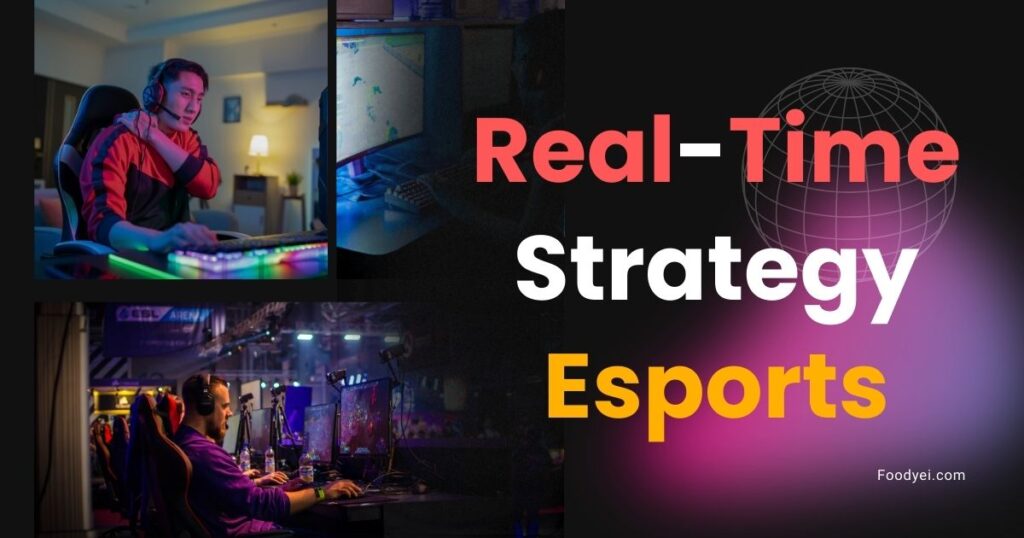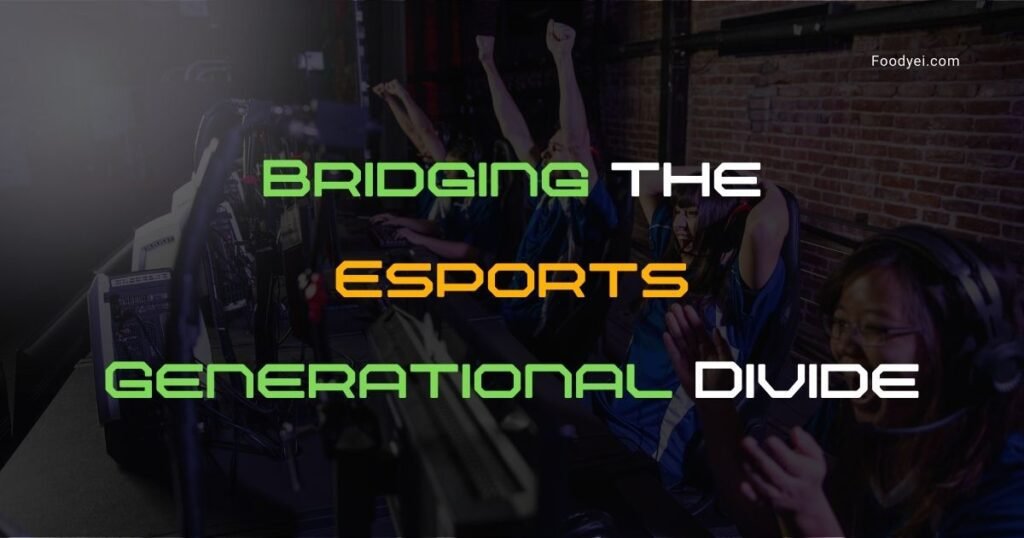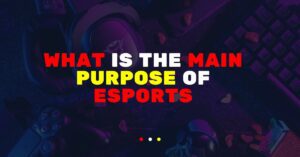Esports continues growing into a major industry, with professional video game competitions attracting huge audiences worldwide. But for those unfamiliar with gaming, the concept can still seem perplexing. By exploring real esports examples, this guide aims to help demystify competitive gaming for the uninitiated.
We’ll examine popular esports titles, top players and teams, major tournaments, and how pros train – illuminating the skill, preparation, and strategy that fuels modern esports entertainment. While games vary, common elements emerge of dedication, quick thinking, coordination, and mastery powering the highest levels of play.
League of Legends
One of the most popular competitive games is League of Legends (LoL) – a multiplayer online battle arena game with two 5-player teams competing to destroy the other’s base. Players select from many unique characters with special abilities.
With over 115 million monthly players globally, League boasts a thriving pro scene in regions like North America, Europe, China, and Korea. Top LoL esports players include names like Faker, Doublelift, and Perkz, competing for teams like T1, G2 Esports, and Rogue.
Events like the LoL World Championships draw hundreds of millions of online viewers. Players prepare through daily solo training plus teamed drills coordinating strategies and character lineups with coaches. Quick reactions, character mastery, and seamless teamwork separate the best.

Dota 2
Dota 2 belongs to the same multiplayer online battle arena (MOBA) genre as League of Legends with two teams using unique characters to overwhelm opponents. Intense competition has arisen ever since the original Defense of the Ancients mod for Warcraft III emerged in the 2000s.
Prominent Dota 2 competitors include players like Miracle-, Armel, and Abed who compete professionally under banners like Team Liquid, T1, and Evil Geniuses across Asia, Europe, and the Americas. The annual Dota 2 International remains the esport’s marquee event, with participants training relentlessly to outsmart and outmaneuver the opposition through well-honed team strategies.
Counter-Strike: Global Offensive
Counter-Strike: Global Offensive (CS:GO) exemplifies the competitive first-person shooter genre pitting terrorists against counter-terrorists in fast-paced duels. As a longstanding sport, CS:GO events like ESL One and the Intel Extreme Masters attract dedicated fanbases.
Star CS:GO athletes like s1mple, ZywOo, and NiKo exhibit almost superhuman reaction speeds and pinpoint aim honed through endless practice and play. While difficult, mastering CS:GO gunplay, movement and positioning provides some of esports’ most thrilling moments. Teams meticulously analyze opponents for any weaknesses.
Fortnite
While newer to the scene, Fortnite has surged in popularity as a mass-market esport. Its 100-player last-man-standing “Battle Royale” matches offer unpredictable excitement. Top “pro” gamers like Bugha, Aqua, and BenjyFishy have achieved multi-million dollar tournament earnings through expert building and survival skills.
Fortnite’s broad appeal comes from blending shooting mechanics with construction elements like building structures for cover. Mastering positioning, situational awareness, and quick thinking lead to victory royales. The 2019 Fortnite World Cup marked a landmark viewing event.
Street Fighter
Fighting games like Street Fighter demand lightning response times and memorization of vast movements during tightly contested matches. All-time legends Daigo Umehara and Justin Wong have cemented Street Fighter’s competitive legacy since the 1990s.
Modern esports athletes like Punk, Tokido, and Sako continue competing at the highest level through flawless inputs, spacing, and execution. Combos performed in fractions of seconds determine winners and losers in intense Fighting Game Community events. Dedicated practice to ingrain complex commands separates the greats.
Real-Time Strategy Esports

While less widely followed, longstanding real-time strategy (RTS) series like Starcraft have thrived as esports thanks to elite players like Serral, Maru, and Rogue demonstrating unmatched strategic and tactical decision-making. Managing resources, scouting, and unit control in a high-stakes dance of skills.
Other RTS games like Age of Empires IV host growing pro circuits in Europe and China through tournaments operated by ESL Gaming and others. Blending brainpower with clicking accuracy rewards those who can balance economy, tech, and battle management.
Training Like Esports Pros
While games vary, top esports athletes commonly leverage:
- Hours of daily “solo queue” play to hone skills and rank up against competitors. This builds individual mastery.
- Team-based scrimmages to develop strategy and chemistry with teammates and coaches.
- Watching replays of professional matches to analyze and learn.
- Maintaining mental and physical health through proper fitness, nutrition and mindfulness habits given hectic training and travel.
- Studying opponents for weaknesses while concealing strategies and tech innovations for surprise value.
The training rigor rivals traditional athletic domains like football or basketball, albeit virtually. But performance demands remain equally high.
While only the most skilled go pro, these glimpses into what powers peak esports levels reveal the incredible dedication and singular mastery competition demands even within virtual worlds. The thrill for viewers comes from witnessing the extraordinary displays of strategic and reactive prowess as players push games to their limits.
Bridging the Esports Generational Divide
For older generations, esports can represent an enigma – a foreign digital landscape of inscrutable games, culture, and appeal among younger demographics. However, looking closer reveals competitive gaming mirrors traditional sports in demands for preparation, skill, coordination, and clutch performances under pressure.
The platforms have changed from fields to screens, but the human drive toward competition and community persists. Striving to master intricate systems designed by others will always motivate a subset of creatively inclined minds. Digital tournaments simply represent that impulse manifested on new technological grounds.

While culture and technology inevitably move faster than any one group can fully integrate in their lifetimes, attempts to understand modern phenomena persist as valuable acts of goodwill. Golf too seemed silly and inscrutable at one point in time to some. The spirit of play remains timeless even as the games evolve.
If one strips away the game specifics as irrelevant to outsiders and looks closer at the undercurrents – passions, rivalries, brilliance – esports reveal themselves not as confusing or foreign but simply the latest iteration on something primal and universally understood: the competitive urge given structure through rules. New languages arrive, but human stories endure as always.
Frequently Asked Questions About Esports
How do esports athletes earn income?
Esports competitors earn prizes through tournaments and leagues, sponsorship deals, merchandise sales, streaming subscriptions, and team salaries in the most professionalized games. Top players can earn millions.
Aren’t esports harmful to children?
Like any activity, moderation matters. But research shows games improve coordination, critical thinking, and friendships. Responsible limits and involvement allow benefits while mitigating any downsides.
Why don’t I understand the appeal of watching esports or Let’s Plays?
As with unfamiliar sports, esports require some investment in learning gameplay mechanics, key players, and stakes to appreciate. But given a chance, the athleticism and competition shines through.
Can esports improve cognitive abilities?
Studies correlate gaming with improved cognition like spatial skills, multitasking, and quick decision-making. But benefits depend heavily on game type, length of play, and broader lifestyle balance.
Is the gender imbalance in esports and gaming improving?
Major strides have occurred recently in inclusion and representation as gaming expands demographically. But as with STEM, more progress remains needed to address old stigmas.




